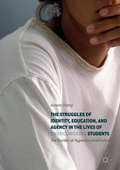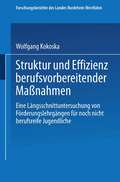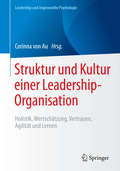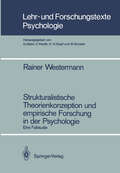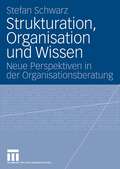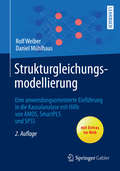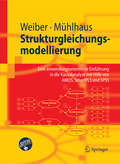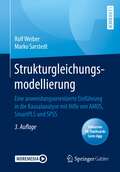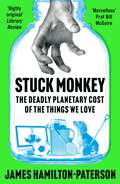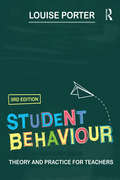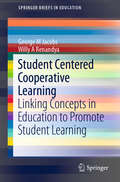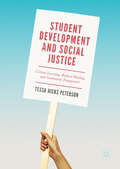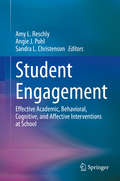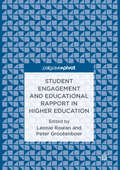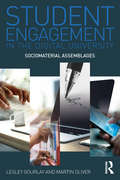- Table View
- List View
The Struggle for Workers' Health
by Ray H. EllingTo better understand how strong worker protection systems differ from weak ones, this volume reports and interprets a study carried out in six nations-Sweden, Finland, The German Democratic Republic, The Federal Republic of Germany, The United Kingdom of Great Britain and Northern Ireland, and the United States of America. The work involved interviews with reputational leaders of different interest groups as well as observations, extensive document study and correspondence with key informants.
The Struggle for Workers' Health
by Ray H. EllingTo better understand how strong worker protection systems differ from weak ones, this volume reports and interprets a study carried out in six nations-Sweden, Finland, The German Democratic Republic, The Federal Republic of Germany, The United Kingdom of Great Britain and Northern Ireland, and the United States of America. The work involved interviews with reputational leaders of different interest groups as well as observations, extensive document study and correspondence with key informants.
The Struggles of Identity, Education, and Agency in the Lives of Undocumented Students: The Burden of Hyperdocumentation (PDF)
by Aurora ChangThis book weaves together two distinct and powerfully related sources of knowledge: the author’s journey and transition from a once undocumented immigrant from Guatemala to a hyperdocumented academic, and five years of on-going national research on the identity, education, and agency of undocumented college students. In interlacing both personal experiences with findings from her empirical qualitative research, Chang explores practical and theoretical pedagogical, curricular, and policy-related discussions around issues that impact undocumented immigrants while provide compelling rich narrative vignettes. Collectively, these findings support the argument that undocumented students can cultivate an empowering self-identity by performing the role of infallible cultural citizen.
Struktur und Effizienz berufsvorbereitender Maßnahmen: Eine Längsschnittuntersuchung von Förderungslehrgängen für noch nicht berufsreife Jugendliche (Forschungsberichte des Landes Nordrhein-Westfalen #3044)
by Wolfgang KokoskaDas Problem der Jugendarbeitslosigkeit, insbesondere des Übergangs von der Schule in die Arbeitswelt, ist zu Beginn der 80er Jahre auch in der Bundesrepublik Deutschland weiter hin virulent. Sowohl in ökonomischer, politischer als auch pädagogischer Dimension sind die strukturellen Merkmale der Ausbildungs- und Berufsnot Jugendlicher noch immer aktuell. Ist zwar einerseits eine gewisse Entspannung insofern einge treten, als die rapide, krisenhafte Ausweitung der Betroffen heit im Verlauf der 70er Jahre zum Stillstand und Rückgang gekommen ist, so kann andererseits immer noch nicht die Rede von einer Bewältigung oder gar dem Ende jugendlicher Berufs startschwierigkeiten sein. Nach dem Tenor gegenwärtiger Wirtschaftsprognosen ist vielmehr davon auszugehen, daß auch noch in absehbarer Zeit beschäftigungs- und arbeitsmarkt intervenierende sowie schul- und berufsbildungspolitisch orientierte Instrumentarien und Strategien, diesem uner wünschten Phänomen gegenzusteuern, erforderlich sein werden. Zumal die Nahtstelle des Übergangs vom allgemeinbildenden in den beruflichen Sektor bedarf auch fernerhin besonderer Zu wendung, markiert sie doch nach wie vor für einen beträcht lichen Teil von Schulabgängern eine nachhaltige Barriere zu qualifizierter Berufsausbildung und beruflicher Tätigkeit.
Struktur und Kultur einer Leadership-Organisation: Holistik, Wertschätzung, Vertrauen, Agilität und Lernen (Leadership und Angewandte Psychologie)
by Corinna Von AuDer vorliegende zweite Band der Reihe Leadership und Angewandte Psychologie beleuchtet die Struktur und Kultur von modernen Leadership-Organisationen. Die Beiträge befassen sich mit theoretischen Grundlagen und auch konkreten Fallbeispielen, die verdeutlichen, wie die Erfolgsfaktoren, u.a. Holistik, Wertschätzung, Vertrauen, Agilität und Lernen einer Leadership-Organisation tatsächlich auch in der Praxis gelebt werden können.
Strukturalistische Theorienkonzeption und empirische Forschung in der Psychologie: Eine Fallstudie (Lehr- und Forschungstexte Psychologie #25)
by Rainer WestermannStrukturation, Organisation und Wissen: Neue Perspektiven in der Organisationsberatung
by Stefan SchwarzStrukturbildende Psychotherapie: Tiefenpsychologie und aktive Imagination
by W. KruckerDas vorliegende Buch beschreibt eine in dieser Form neue Methode der Psychotherapie. Mit Hilfe der "aktiven Imagination" als therapeutischer Technik wird ein Prozeß in Gang gesetzt, der eine Strukturveränderung bzw. den Aufbau neuer Strukturen in der Psyche des Klienten bewirken kann. Die im Bild erscheinenden Figuren/Gestalten und ihre Handlungen werden vom Unbewußten gesteuert - das bewußte Ich tritt mit ihnen in eine frei wählbare Beziehung. Der Therapeut beobachtet die Entwicklung der Handlung und greift nur ein, wenn das Ich eine Abwehrhaltung erkennen läßt. Der theoretische Verständnishintergrund geht dabei über die cartesianisch geprägte Metapsychologie Freuds hinaus und beschreibt die Doppelnatur des Menschen als Leibsein, ebenso wie als ungegenständliches In-der-Welt-Sein. Neuere Aspekte aus der Psychoanalyse werden im Hinblick auf die Strukturbildung zusammengefaßt. Diese Erkenntnisse fließen ein in eine Theorie einer phänomenologisch orientierten Psychotherapie. Indikation, Widerstand, Übertragung und Strukturaufbau werden beschrieben. Ein praktischer Teil illustriert die Schwierigkeiten und Besonderheiten der Imaginationstherapie mit Beispielen. Schlußendlich wird der Gesamtverlauf einer Therapie beschrieben.
Strukturgleichungsmodellierung: Eine anwendungsorientierte Einführung in die Kausalanalyse mit Hilfe von AMOS, SmartPLS und SPSS (Springer-Lehrbuch)
by Rolf Weiber Daniel MühlhausAlle Analysen werden an einem durchgehenden Fallbeispiel konkret und transparent durchgeführt Strukturgleichungsmodelle sind in allen Wissenschaftsdisziplinen von größter Bedeutung, da sie das Standardinstrument zur empirischen Prüfung von Hypothesensystemen darstellen. Dabei stehen oftmals die Beziehungen zwischen hypothetischen Konstrukten (latenten Variablen) im Fokus des Interesses. Das Buch zeichnet den gesamten Prozess der Strukturgleichungsmodellierung von der Konzeptualisierung theoretischer Konstrukte über die Spezifikation von Messmodellen, die Reliabilitäts- und Validitätsprüfung mittels konfirmatorischer Faktorenanalyse bis hin zur Prüfung von kausalen Wirkhypothesen mittels Kovarianzstrukturanalyse sowie PLS nach. Alle Arbeitsschritte werden an einem durchgehenden Fallbeispiel unter Verwendung von SPSS, AMOS und SmartPLS veranschaulicht und jeweils konkrete Anwendungsempfehlungen gegeben. Ebenso werden weiterführende Aspekte wie die Mehrgruppenkausalanalyse, die Spezifikation reflektiver und formativer Messansätze sowie MIMIC-Modelle einsteigergerecht behandelt.
Strukturgleichungsmodellierung: Eine anwendungsorientierte Einführung in die Kausalanalyse mit Hilfe von AMOS, SmartPLS und SPSS (Springer-Lehrbuch)
by Rolf Weiber Daniel MühlhausStrukturgleichungsmodelle sind in allen Wissenschaftsdisziplinen von größter Bedeutung, da sie das Standardinstrument zur empirischen Prüfung von Hypothesensystemen darstellen. Dabei stehen oftmals die Beziehungen zwischen hypothetischen Konstrukten (latenten Variablen) im Fokus des Interesses. Das Buch zeichnet den gesamten Prozess der Strukturgleichungsmodellierung von der Konzeptualisierung theoretischer Konstrukte über die Spezifikation von Messmodellen, die Reliabilitäts- und Validitätsprüfung mittels konfirmatorischer Faktorenanalyse bis hin zur Prüfung von kausalen Wirkhypothesen mittels Kovarianzstrukturanalyse sowie PLS nach. Alle Arbeitsschritte werden an einem durchgehenden Fallbeispiel unter Verwendung von SPSS, AMOS und SmartPLS veranschaulicht und jeweils konkrete Anwendungsempfehlungen gegeben. Ebenso werden weiterführende Aspekte wie die Mehrgruppenkausalanalyse, die Spezifikation reflektiver und formativer Messansätze sowie MIMIC-Modelle einsteigergerecht behandelt.
Strukturgleichungsmodellierung: Eine anwendungsorientierte Einführung in die Kausalanalyse mit Hilfe von AMOS, SmartPLS und SPSS
by Rolf Weiber Marko SarstedtStrukturgleichungsmodelle stellen das Standardinstrument zur empirischen Prüfung von hypothetisierten Beziehungen zwischen theoretischen Konstrukten (latenten Variablen) dar. Das Buch zeichnet den gesamten Prozess der Strukturgleichungsmodellierung von der Konzeptualisierung theoretischer Konstrukte über die Spezifikation von Messmodellen, die Reliabilitäts- und Validitätsprüfung mittels konfirmatorischer Faktorenanalyse bis hin zur Prüfung von kausalen Wirkungshypothesen auf Basis der Kovarianzstrukturanalyse sowie der Partial Least Squares-Pfadmodellierung nach.Die einzelnen Analysen werden so erläutert, dass geringstmögliche mathematische Vorkenntnisse erforderlich sind. Alle Arbeitsschritte werden an einem durchgehenden Fallbeispiel unter Verwendung von SPSS, AMOS und SmartPLS veranschaulicht. Zu allen Arbeitsschritten werden klare Anwendungsempfehlungen sowie Hinweise zum Umgang mit unerwarteten Analyseergebnissen gegeben. Die Verwendung der jeweiligen Software wird ausführlich durch Screenshots erläutert. Für die 3. Auflage wurde das Buch umfassend überarbeitet, um die jüngsten methodischen Entwicklungen abzudecken. Besonderer Fokus wurde auf die Ausführungen zur PLS-Pfadmodellierung und Darstellung alternativer Schätzverfahren der Kausalanalyse gelegt. Das Angebot wurde zudem um digitale Lernkarten (Flashcards) erweitert, welche es dem Leser ermöglichen, das Wissen aus dem Buch zu vertiefen.Die ZielgruppenDas Buch richtet sich an Studierende und Lehrende in Master- und Doktorandenprogrammen sowie an Anwender aus der Unternehmens- und insbesondere Marktforschungspraxis. Es ist von besonderem Nutzen für alle, die Wirkungshypothesen zwischen latenten Variablen empirisch prüfen möchten. Das Fallbeispiel ist so allgemein gehalten, dass der Anwender die Analysen leicht auf spezifische Fragen und Probleme in seinen jeweiligen Anwendungsfeldern übertragen kann.Über die Internetseite www.strukturgleichungsmodellierung.de haben die Leserinnen und Leser Zugriff auf alle im Buch verwendeten Datensätze und Analyseskripte sowie weitere Serviceleistungen.
Stubborn Particulars of Social Psychology: Essays on the Research Process (Critical Psychology Series)
by Frances CherryThe `Stubborn Particulars' of Social Psychology gives students an alternative approach to social psychology which acknowledges the limits of shared understandings often imposed by class, race, culture, nationality, ethnicity, language and gender. Frances Cherry shows how the generation of hypotheses, experimental practice, the interpretation of results and the process of scientific communication itself are equally framed by historical and cutural context. She discusses how to begin to understand one's own biases and prejudices, and how we create and make sense of our own social psychology as an engaged social critic, rather than as some idealised `objective' scientist. The `Stubborn Particulars' of Social Psychology should be required reading for all social psychology students as an antidote to their course text.
Stubborn Particulars of Social Psychology: Essays on the Research Process (Critical Psychology Series)
by Frances CherryThe `Stubborn Particulars' of Social Psychology gives students an alternative approach to social psychology which acknowledges the limits of shared understandings often imposed by class, race, culture, nationality, ethnicity, language and gender. Frances Cherry shows how the generation of hypotheses, experimental practice, the interpretation of results and the process of scientific communication itself are equally framed by historical and cutural context. She discusses how to begin to understand one's own biases and prejudices, and how we create and make sense of our own social psychology as an engaged social critic, rather than as some idealised `objective' scientist. The `Stubborn Particulars' of Social Psychology should be required reading for all social psychology students as an antidote to their course text.
Stuck Monkey: The Deadly Planetary Cost of the Things We Love
by James Hamilton-PatersonPeople hunting monkeys in the jungle once devised a simple yet effective trap: When the creature found a banana in a large jar with a narrow neck, it would plunge its paw in to retrieve it. But it couldn't let go. And unless the monkey released the banana, it was stuck.We are, of course, the stuck monkey, paralysed by our modern lifestyles and consumer habits: our constant stream of online shopping deliveries, our compulsive dependence on digital devices, our obsession with ourpets. These addictions, as small and harmless as they may seem, are quietly destroying the planet. And the eco-friendly alternatives that alleviate our guilt are often not much better.In Stuck Monkey, James Hamilton-Paterson uncovers the truth behind the everyday habits fuelling the climate crisis. Drawing on eye-opening research and shocking statistics, he mercilessly dissects a wide spectrum of modern life: pets, gardening, sports, vehicles, fashion, wellness, holidays, and more. Ferociously unflinching andintelligent, this book will make you think twice about the 'innocent' habits we often take for granted.
Student Behaviour: Theory and practice for teachers
by Louise PorterBehaviour management in the classroom and schoolyard is one of the most challenging aspects of teaching. Student Behaviour offers a comprehensive overview of the major theories of behaviour management in primary and secondary schools, illustrated with detailed case studies.Porter outlines how teachers can develop a personal approach to classroom management based on a sound understanding of theory. The emphasis is on proactive approaches to discipline to assist students in achieving educational and social goals. Porter also shows how to enhance students' motivation and help students become confident and independent learners. This third edition has been fully revised and updated to reflect the latest research, and includes new material on collaborating with parents, ethical issues, dealing with bullying and helping students to be autonomous in their learning and behaviour. Examples and references are drawn from current international research.Student Behaviour is an essential textbook for preservice teachers and a valuable reference for more experienced teachers who want to improve their ability to cope with disruptive behaviour. The style of writing is clear, accessible and authoritative an ideal text for all teachers in initial and post-experience training. It treats its audience as intelligent and discerning, provides a clear digest of a very wide range of published material, and allows its readers to reach their own decisions about suitable and sensitively executed approaches that are likely to be of lasting value.' - British Journal of Educational Psychology
Student Behaviour: Theory and practice for teachers
by Louise PorterBehaviour management in the classroom and schoolyard is one of the most challenging aspects of teaching. Student Behaviour offers a comprehensive overview of the major theories of behaviour management in primary and secondary schools, illustrated with detailed case studies.Porter outlines how teachers can develop a personal approach to classroom management based on a sound understanding of theory. The emphasis is on proactive approaches to discipline to assist students in achieving educational and social goals. Porter also shows how to enhance students' motivation and help students become confident and independent learners. This third edition has been fully revised and updated to reflect the latest research, and includes new material on collaborating with parents, ethical issues, dealing with bullying and helping students to be autonomous in their learning and behaviour. Examples and references are drawn from current international research.Student Behaviour is an essential textbook for preservice teachers and a valuable reference for more experienced teachers who want to improve their ability to cope with disruptive behaviour. The style of writing is clear, accessible and authoritative an ideal text for all teachers in initial and post-experience training. It treats its audience as intelligent and discerning, provides a clear digest of a very wide range of published material, and allows its readers to reach their own decisions about suitable and sensitively executed approaches that are likely to be of lasting value.' - British Journal of Educational Psychology
Student Centered Cooperative Learning: Linking Concepts in Education to Promote Student Learning (SpringerBriefs in Education)
by George M Jacobs Willy A RenandyaThis book helps teachers understand the links between cooperative learning (also known as collaborative learning and peer learning) and other student-centered approaches. It discusses cooperative learning and communities of practice; cooperative learning and neuroscience; cooperative learning and critical thinking; cooperative learning and alternative assessment; cooperative learning and multiple intelligence; cooperative learning and positive education; cooperative learning and meeting the needs of introverts; and cooperative learning and justice issues, with each chapter exploring a different aspect of how education can be student centered.If you are looking for a fresh perspective on cooperative learning, this book is for you. It helps you explore how cooperative learning is so much more than just asking students to arrange themselves in a group, and considers how cooperative learning can fit with other areas of education that you care about. Although the two authors both completed their PhDs in the West, they have taught in Asia for the past 25+ years, working with students and teachers from a wide variety of Asian and other countries, and with teachers from a very wide variety of content areas who teach students of many different ages.
Student Development and Social Justice: Critical Learning, Radical Healing, and Community Engagement
by Tessa Hicks PetersonThis book weaves together critical components of student development and community building for social justice to prepare students to engage effectively in community-campus partnerships for social change. The author combines diverse theoretical models such as critical pedagogy, asset-based community development, and healing justice with lessons from programs promoting indigenous knowledge, decolonization, and mindfulness. Most importantly, this book links theory to practice, offering service-learning classroom activities, course and community partnership criteria, learning outcomes, and assessment rubrics. It speaks to students, faculty, administrators, and community members who are interested in utilizing community engagement as a vehicle for the development of students and communities towards wellbeing and social justice.
Student Dies, A School Mourns: Dealing With Death and Loss in the School Community
by Ralph L. KlickerFirst published in 2000. Routledge is an imprint of Taylor & Francis, an informa company.
Student Dies, A School Mourns: Dealing With Death and Loss in the School Community
by Ralph L. KlickerFirst published in 2000. Routledge is an imprint of Taylor & Francis, an informa company.
Student Engagement: Effective Academic, Behavioral, Cognitive, and Affective Interventions at School
by Amy L. Reschly Sandra L. Christenson Angie J. PohlThis book provides cutting-edge, evidence-based strategies and interventions that target students’ engagement at school and with learning. Coverage begins with the background and 29-year history of the Check & Connect Model and describes the model and assessment of student engagement that served as the backdrop for conceptualizing the engagement interventions described in the book. Subsequent chapters are organized around the subtypes of student engagement – academic, behavioral, affective, cognitive – that were developed based on work with the Check & Connect Model. Principles and formal interventions are presented at both the universal and more intensive levels, consistent with the Response-to-Intervention/Multi-Tiered System of Support (MTSS) framework. The book concludes with a summary on the lessons learned from Check & Connect and the importance of a system that is oriented toward enhancing engagement and school completion for all students. Interventions featured in this book include: Peer-Assisted Learning Strategies (PALS).The Homework, Organization, and Planning Skills (HOPS) Intervention.The Good Behavior Game in the classroom.Check-in, Check-out (CICO). Banking Time, a dyadic intervention to improve teacher-student relationshipsThe Self-Regulation Empowerment Program (SREP). Student Engagement is a must-have resource for researchers, professionals, and graduate students in child and school psychology, educational policy and politics, and family studies.
Student Engagement and Educational Rapport in Higher Education
by Leonie Rowan Peter GrootenboerThis book outlines a range of innovative methods to gather student feedback, and explores the complex relation between student engagement, student satisfaction, and student success. Drawing on results from a set of numerous case-studies carried out at a school of education, the book reports on a range of theoretically-informed teaching innovations, including focus groups, learning analytics data, collegial conversations and insights from student researchers, that have been designed to create respectful, student-centred, and engaging learning environments. In the current climate of ever-increasing pressure on delivering high student satisfaction rates, these results are invaluable for university students and teachers across the globe.With its unique thematic focus on educational rapport and relationship-centred education, the book is an excellent reference point for staff with a commitment to the scholarship of learning and teaching. It will be of great interest to students, practitioners, teachers and policy makers in higher education.
Student Engagement and Educational Rapport in Higher Education
by Leonie Rowan Peter GrootenboerThis book outlines a range of innovative methods to gather student feedback, and explores the complex relation between student engagement, student satisfaction, and student success. Drawing on results from a set of numerous case-studies carried out at a school of education, the book reports on a range of theoretically-informed teaching innovations, including focus groups, learning analytics data, collegial conversations and insights from student researchers, that have been designed to create respectful, student-centred, and engaging learning environments. In the current climate of ever-increasing pressure on delivering high student satisfaction rates, these results are invaluable for university students and teachers across the globe.With its unique thematic focus on educational rapport and relationship-centred education, the book is an excellent reference point for staff with a commitment to the scholarship of learning and teaching. It will be of great interest to students, practitioners, teachers and policy makers in higher education.
Student Engagement in the Digital University: Sociomaterial Assemblages
by Martin Oliver Lesley GourlayStudent Engagement in the Digital University challenges mainstream conceptions and assumptions about students’ engagement with digital resources in Higher Education. While engagement in online learning environments is often reduced to sets of transferable skills or typological categories, the authors propose that these experiences must be understood as embodied, socially situated, and taking place in complex networks of human and nonhuman actors. Using empirical data from a JISC-funded project on digital literacies, this book performs a sociomaterial analysis of student–technology interactions, complicating the optimistic and utopian narratives surrounding technology and education today and positing far-reaching implications for research, policy and practice.
Student Engagement in the Digital University: Sociomaterial Assemblages
by Martin Oliver Lesley GourlayStudent Engagement in the Digital University challenges mainstream conceptions and assumptions about students’ engagement with digital resources in Higher Education. While engagement in online learning environments is often reduced to sets of transferable skills or typological categories, the authors propose that these experiences must be understood as embodied, socially situated, and taking place in complex networks of human and nonhuman actors. Using empirical data from a JISC-funded project on digital literacies, this book performs a sociomaterial analysis of student–technology interactions, complicating the optimistic and utopian narratives surrounding technology and education today and positing far-reaching implications for research, policy and practice.

